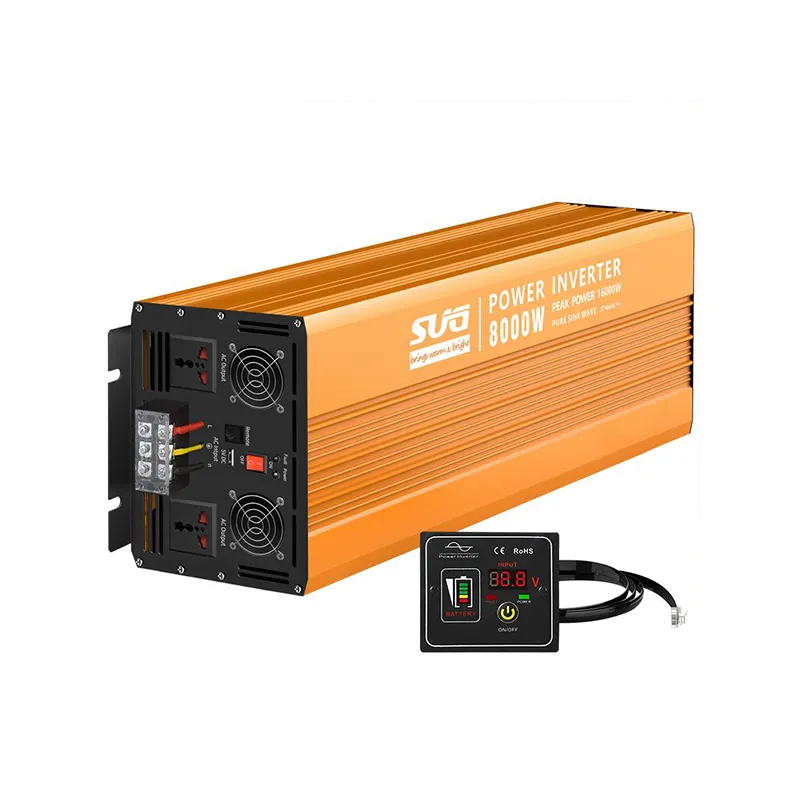hybrid solar inverter 10kw 3 phase
Understanding the 10 kW Hybrid Solar Inverter for Three-Phase Systems
As the world transitions toward renewable energy sources, solar power has emerged as one of the most viable alternatives. A significant component of solar energy systems is the inverter, which converts the direct current (DC) generated by solar panels into alternating current (AC) used in homes and businesses. Among the various types available, the hybrid solar inverter stands out due to its flexibility and efficiency. In this article, we will delve into the features, benefits, and considerations of the 10 kW hybrid solar inverter for three-phase systems.
What is a Hybrid Solar Inverter?
A hybrid solar inverter is a sophisticated device that not only converts solar energy into usable electricity but also integrates energy storage solutions. Unlike traditional inverters, which only manage solar power generation and grid connection, hybrid inverters can manage multiple energy sources, including batteries, the grid, and diesel generators. This functionality makes them ideal for both residential and commercial applications.
The Importance of Three-Phase Systems
Three-phase systems are commonly used in commercial settings and in large residential applications due to their efficiency in power delivery and reduced current load on each conductor. A 10 kW hybrid inverter specifically designed for three-phase use can efficiently distribute energy across multiple outlets and devices, ensuring stable and reliable power supply. This is crucial for businesses that rely on consistent energy for operations, as well as for larger homes with significant power demands.
Key Features of a 10 kW Hybrid Solar Inverter
1. Energy Management Hybrid inverters intelligently manage energy production, consumption, and storage. They can store excess energy generated during the day and release it during peak usage times or when solar production is low.
2. Multi-Input Compatibility A 10 kW hybrid inverter typically allows for multiple input sources, enabling users to combine solar panels with battery systems. This means users can take advantage of solar energy while also having a backup during outages.
3. Grid Interaction These inverters can operate in grid-tied mode, off-grid mode, or a combination of both. This flexibility means that when the grid is available, excess solar energy can be fed back into it, potentially providing energy credits or compensation.
4. Advanced Monitoring Many hybrid inverters come equipped with sophisticated monitoring systems, allowing users to track energy production, consumption, and battery status in real time using smartphone applications. This feature enhances user engagement and encourages energy efficiency.
hybrid solar inverter 10kw 3 phase

5. Scalability A 10 kW capacity makes it suitable for various applications, from residential setups to larger commercial installations. Users can expand their systems by adding more solar panels or batteries as needed.
Benefits of Using a 10 kW Hybrid Solar Inverter
1. Cost-Efficiency With the potential to store and utilize solar energy off-peak, users can reduce their electricity bills significantly. Grid dependency is also minimized, which is beneficial in areas with high electricity costs.
2. Environmentally Friendly By harnessing solar energy, hybrid inverters contribute to a decrease in carbon emissions. This transition to green energy is crucial for combating climate change and promoting sustainability.
3. Increased Energy Security The ability to store energy in batteries provides a reliable backup during power outages, ensuring that critical systems remain operational.
4. Versatility The hybrid inverter’s capability to integrate various energy sources makes it a versatile choice for homes and businesses, accommodating future energy needs and advancements in technology.
Considerations When Choosing a Hybrid Inverter
When selecting a 10 kW hybrid solar inverter, it is essential to consider factors such as compatibility with existing solar panels, battery types, and overall energy needs. Additionally, assessing the inverter's warranty and customer support options can influence the long-term satisfaction of the investment.
Conclusion
The 10 kW hybrid solar inverter for three-phase systems represents a cutting-edge solution for both residential and commercial energy needs. With its ability to manage various energy sources and provide backup power, it offers a sustainable and efficient approach to energy consumption. By investing in this technology, users can enjoy greater control over their energy use while contributing to a more sustainable future. As energy demands continue to grow, the adoption of hybrid solar inverters will play a pivotal role in the global shift toward renewable energy sources.
-
String Solar Inverter: The High-Efficiency Solution for Smart Solar EnergyNewsJul.14,2025
-
Revolutionizing Rooftop Energy with the Power of the Micro Solar InverterNewsJul.14,2025
-
Power Independence with Smart Off Grid Solar Inverter SolutionsNewsJul.14,2025
-
On Grid Solar Inverter: Powering the Future with Smart Grid IntegrationNewsJul.14,2025
-
Monocrystalline Solar Panels: High-Efficiency Power for the Future of Clean EnergyNewsJul.14,2025
-
Bifacial Solar Panel: A Smarter Investment for Next-Generation Energy SystemsNewsJul.14,2025







